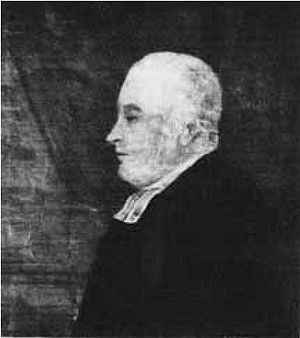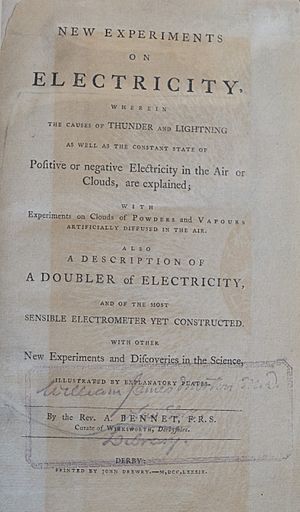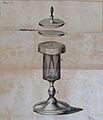Abraham Bennet facts for kids

Abraham Bennet (born in 1749, died in 1799) was an English clergyman and scientist. He is best known for inventing the gold-leaf electroscope. This clever device helps detect even tiny amounts of electricity. He also made improvements to a tool called a magnetometer, which measures magnetic forces. A very famous scientist named Alessandro Volta said that Bennet's work was a key inspiration for his own discoveries. Sadly, Bennet's scientific work was cut short by the political changes happening in his time.
Contents
Bennet's Life and Work
Abraham Bennet was born in Taxal, Derbyshire. His father, also named Abraham Bennet, was a schoolmaster. We don't have records of him going to university. However, he became a teacher at Wirksworth Grammar School.
In 1775, he became a curate (a type of church minister) in Tideswell. A year later, he also became a curate in Wirksworth. He held several other church roles too. He was a rector (another church leader) in Fenny Bentley. He also worked for important people like the Duke of Devonshire and the Duke of Bedford.
Bennet was very interested in natural philosophy. This was the name for science back then. He was connected to groups like the Lunar Society and the Derby Philosophical Society. These were groups of thinkers and scientists. He was especially close to Erasmus Darwin, who was a famous doctor and scientist. Darwin suggested that Bennet should measure electricity as part of studying weather. Bennet worked very hard to become an expert in electricity. He became so well-known that he met with other important scientists like Tiberius Cavallo and Alessandro Volta in London in 1782.
His Book: New Experiments
In 1789, Bennet published a book called New Experiments on Electricity. In this book, he described some important inventions and ideas:
- The gold-leaf electroscope: This was his most famous invention. It uses two thin pieces of gold leaf that spread apart when they touch an electric charge. This shows if an object has electricity.
- A doubler of electricity: This device could increase a small amount of electricity into a larger, more noticeable amount.
- A theory of electricity: Bennet had ideas about how electricity worked. His ideas were very similar to what Alessandro Volta later called the contact theory. Bennet's work was a big step that led Volta to create the voltaic pile, which was the first electric battery!
Bennet also wrote about experiments with an electrophorus. This is a simple device that can create static electricity. He also explored how electricity might be made by evaporation. Bennet even used his ideas about electricity to explain natural events. He thought the aurora borealis (Northern Lights) and meteors were caused by electricity. He believed lightning was electricity being released from clouds. He even wondered if earthquakes had an electrical cause.
Challenges and Later Life
Bennet had support from important people like Joseph Banks. However, the political situation in Britain became difficult. There was a lot of tension because of the French Revolution. People who supported new, radical ideas were often seen as a threat. Bennet found himself caught between his scientific friends, who sometimes had radical views, and his powerful supporters, who were against these views.
In 1795, he had to take a side. He signed a document against radical ideas. His scientific work seems to have stopped around this time. This might have been because he was unwell. It also might have been because it was hard to keep his scientific work going with all the political pressure.
Family and Legacy
Abraham Bennet married Jane, and they had six daughters and two sons. He passed away from a serious illness.
Honours and Memorials
- He became a Fellow of the Royal Society in 1789. This is a very high honour for scientists.
- There is a special plaque in St Mary's Church, Wirksworth to remember him. You can also see a portrait of him there.





